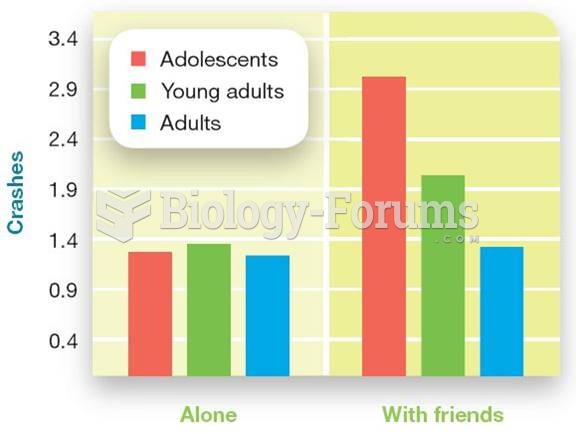|
|
|
In ancient Rome, many of the richer people in the population had lead-induced gout. The reason for this is unclear. Lead poisoning has also been linked to madness.
A good example of polar molecules can be understood when trying to make a cake. If water and oil are required, they will not mix together. If you put them into a measuring cup, the oil will rise to the top while the water remains on the bottom.
To prove that stomach ulcers were caused by bacteria and not by stress, a researcher consumed an entire laboratory beaker full of bacterial culture. After this, he did indeed develop stomach ulcers, and won the Nobel Prize for his discovery.
People about to have surgery must tell their health care providers about all supplements they take.
More than 30% of American adults, and about 12% of children utilize health care approaches that were developed outside of conventional medicine.
 A Bottlenose Dolphin (Tursiops truncatus) surfs the wave of a research boat on the Banana River, nea
A Bottlenose Dolphin (Tursiops truncatus) surfs the wave of a research boat on the Banana River, nea
 Nurses may collaborate with social workers, physicians, and other members of the health care team to
Nurses may collaborate with social workers, physicians, and other members of the health care team to





